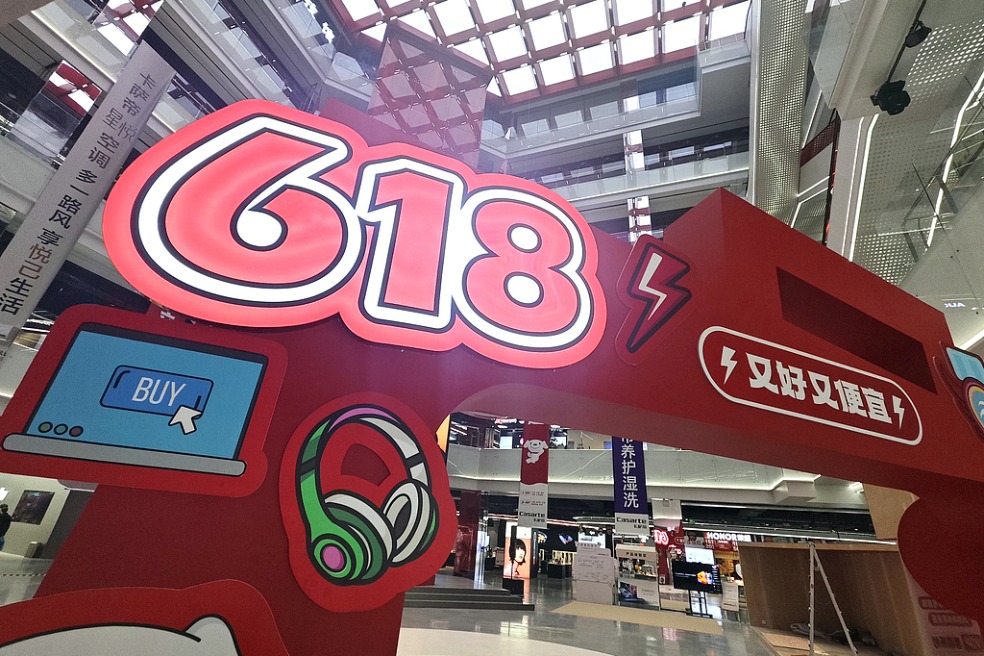Bridge overcomes technical challenges
By LUIS LIU | China Daily | Updated: 2017-06-14 07:38
 |
| The Hong Kong-Zhuhai-Macao Bridge under construction in April.LI JIANSHU/CHINA DAILY |
Editor's note: In the run-up to the 19th Communist Party of China National Congress, China Daily will cover a series of key projects and advanced equipment of national importance, showcasing the country's huge improvement and relentless efforts at innovation.
Builders of the massive Hong Kong-Zhuhai-Macao Bridge-which, when completed, will be the world's longest bridge over water-overcame one of the most complex challenges ever to confront engineers.
The Y-shaped span, which will link the three cities, incorporates the latest engineering technology and design, enabling the structures to withstand a magnitude 8 earthquake, a super typhoon or a strike by a cargo vessel weighing 300,000 metric tons.
Engineers were confronted with complex geological and topographical conditions, taking into account prevailing winds and tidal forces.
From an artificial island near Hong Kong International Airport, the structure runs west to another artificial island off the eastern shore of Macao, a distance of 55 kilometers, 20 times the length of San Francisco's Golden Gate Bridge. The new bridge will also connect to a town being built on a reclaimed land in Macao.
A journey by land, which can take up to four hours, will be shortened to as little as 30 minutes once the bridge is completed, according to official projections.
The bridge, which is expected to be put to use by the end of this year, is actually a series of bridges and tunnels crossing the Pearl River estuary-30 km above water, 7 km of underwater tunnels and a number of artificial islands.
The major section will provide a dual three-lane expressway to handle traffic up to speeds of 100 km/h. The total bridge width is 33.1 meters, with two 14.25-meter tunnels and a vertical clearance of 5.1 meters.
As many as 4,000 ships a day are expected to navigate waters above the tunnel, serving ports around the estuary.
The artificial islands constructed at the ends of the sea tunnel are reinforced by 120 giant steel cylinders, each 22.5 meters in diameter and 55 meters high, equivalent to the height of an 18-story building. Each cylinder weighs 550 tons, about the same as an Airbus A380, the world's largest passenger jet.
A total of 400,000 tons of steel were used in the massive project, equivalent to 60 times the steel used to build the Eiffel Tower. The bridge is designed for a 120-year life span. Most big, cross-sea bridges were designed to last 100 years, according to historical data.
The new bridge also required close attention to environmental issues in the Pearl River Delta, including corridors that sustain marine life. That meant the bridge design had to take into account river channels, fundamental hydrology and navigation routes to ensure the natural ecosystem was not disrupted and channels blocked.
Su Quanke, chief engineer at the Hong Kong-Zhuhai-Macao Bridge Authority, said in a briefing that his team had overcome more than 80 technical obstacles to lay a solid foundation for the bridge.
"All its major units are standardized. The manufacturing is industrialized. The installation can be implemented on a large scale with refinement of detail," he said.
Moreover, it uses a digital control system and its maintenance can be easy and efficient, he added. "These practices have received recognition from the bridge design and construction industry around the world," he said.
Meng Fanchao, chief designer of the bridge, said the design team solicited advice of experts in various fields, including environmental protection, navigation, hydrology, aviation, social economy, bridge engineering, engineering technology and weather.
Finally, the team selected the route from among a dozen final proposals after scientific appraisals, Meng said.
A blueprint for the massive infrastructure project was introduced in 1983 almost as a fantasy of Hong Kong tycoon Gordon Wu Ying-sheung. His vision was to accelerate integration of the two sides of the Pearl River. Originally, the project was not supposed to include tunnels-only bridges-between Hong Kong's Tuen Mun and Zhuhai, Guangdong province.
Zhuhai was in its early stages of development at the time. As one of the first special economic zones set up by the central government in the 1980s to attract foreign investors, the city needed more convenient transportation to Hong Kong, Wu said in his proposal.
After 1997, the authorities saw potential in the plan. The original design was dropped, and planning started on a link from Zhuhai and Macao, linking to Hong Kong's new international airport.
After rounds of negotiations between the three cities' authorities, in 2009, the State Council nailed down the final plan and kicked off construction the same year.
The cost of the bridge was estimated to exceed 115.9 billion yuan ($17 billion), according to the bridge authority.

- Major science innovation projects set for this year
- China spends more than 22 bln yuan on science projects in 2016
- Environmental protection projects in border areas
- China encourages insurance funds to invest in major projects
- Scams net millions of yuan intended for projects to raise living standards
























